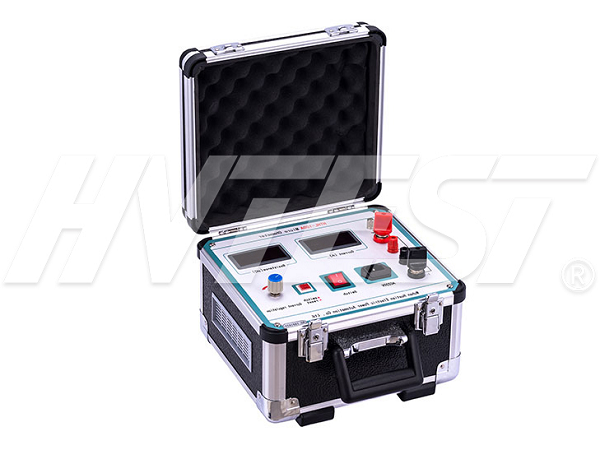Detection Technology
Solution to failure of loop resistance tester
1. Phenomenon: The loop resistance tester is connected to 220V AC power supply, the fan is silent, and the "test switch" is pressed, the ammeter and micro-ohm meter have no display.
Reason: 220V AC power supply is blocked, the fuse is not installed or is blown.
Elimination method: check and eliminate. (100A instrument insurance is not less than 6A, and then contact the factory to solve it. (Never connect to DC or 380V AC power)
2. Phenomenon: Press the "test switch", the ammeter shows no current, and the highest bit of the micro-ohm meter shows "1".
Reason: The 100A current loop is not connected properly. The subject switch was not closed.
Remedy: check the test line, reconnect, and re-clamp. Close the switch.
3. Phenomenon: The test current is normal, and the highest micro-ohm value displays "1"
Reason: The position of the voltage clamp is wrong. The resistance of the tested circuit exceeds 2000□□. The voltage signal line is broken or not connected.
Remedy: deal with the voltage signal circuit, clamp the voltage clamp properly. When the range is exceeded: use a multimeter to measure the voltage values of P1 and P2, and the resistance value = voltage value/current value.
4. Phenomenon: The output current is dozens of times less than 100A.
Reason: The power supply voltage is too low, the internal resistance of the power line is large or the contact is poor, and the voltage drop is too large when there is a DC output, and it cannot reach 190V. The terminals C1 and C2 are loose. The circuit under test and the test wire clamp are in poor contact.
Remedy: Use a qualified power supply, use a power cord that is too long and thin, and deal with the circuit under test to eliminate poor contact. Use proper force when twisting the terminals C1, C2, P1, P2. (The test current is at 30A, the test value is credible)
5. Phenomenon: The test current is normal, and the micro-ohm display is abnormal and does not repeat.
Reason: The voltage signal circuit is in poor contact, which is always on and off. The measured resistance itself is not in good contact, and the resistance value changes.
Remedy: Ensure good and reliable contact. Check and rule out.
6. Phenomenon: The test current is normal, and the micro-ohm meter shows a negative value.
Reason: The voltage clamp is misplaced, and the positive and negative connections are reversed.
Remedy: Correct, it should be: P1+, P2.
7. Phenomenon: During the calibration test, sometimes the displayed value fluctuates greatly.
Reason: The test wire was in the shape of an inductance coil during the verification test.
Remedy: Pull the test line apart to reduce its inductance and mutual inductance.
What is insulation resistance test? | 2021/7/27 | reading711time If the loop resistance tester is used | 2021/7/26 | reading693time return


